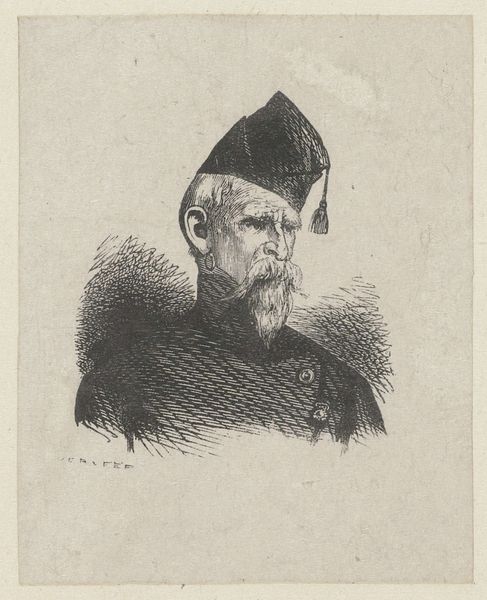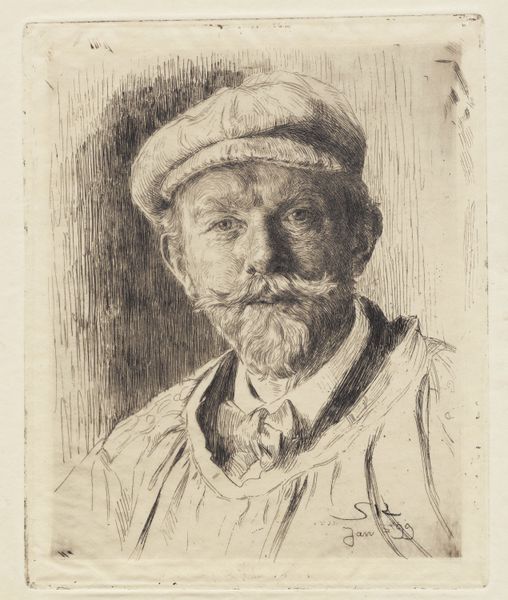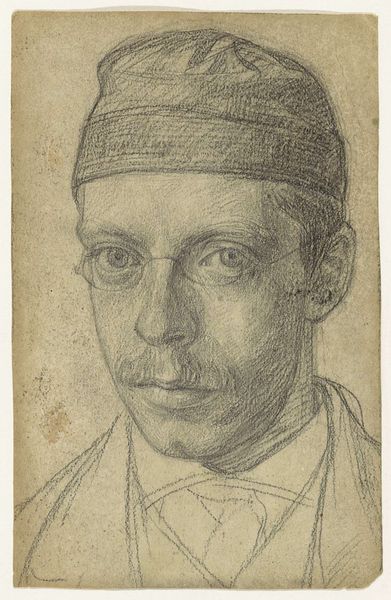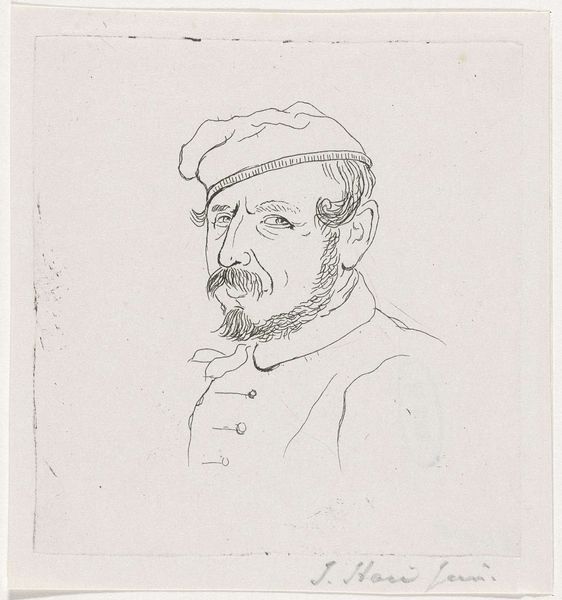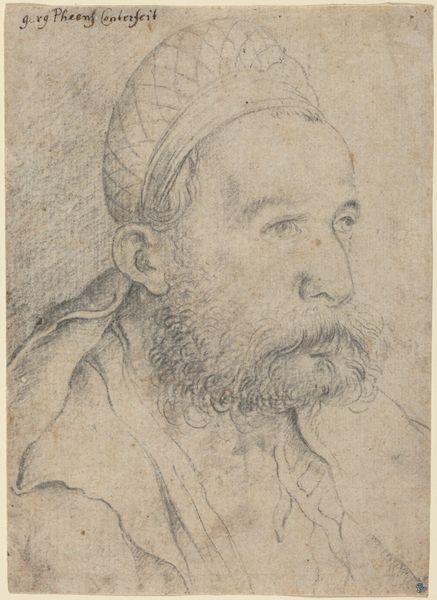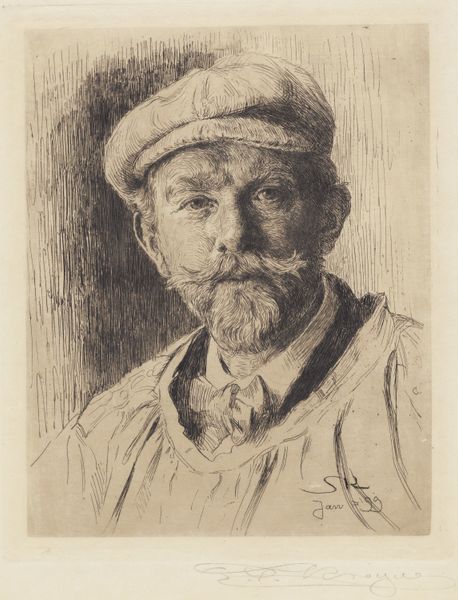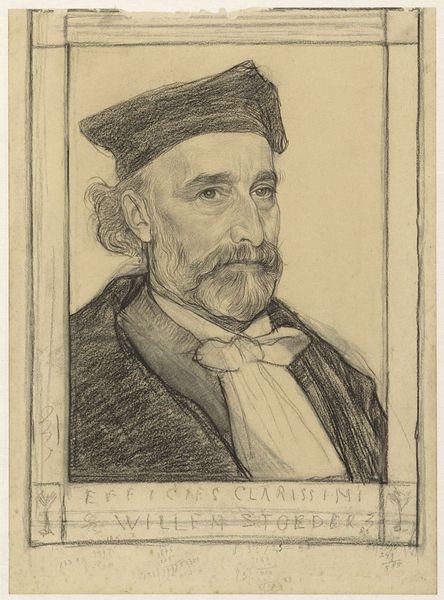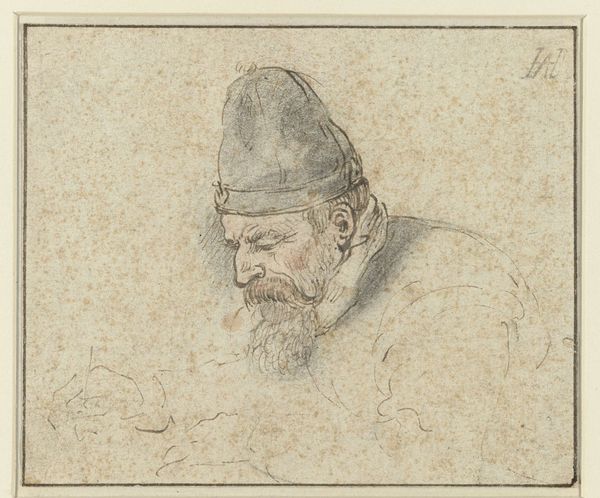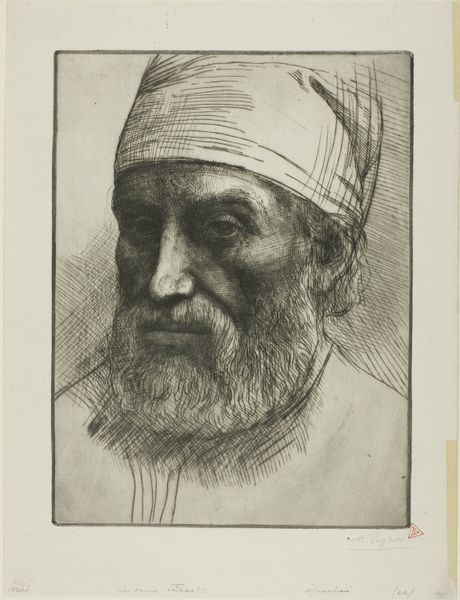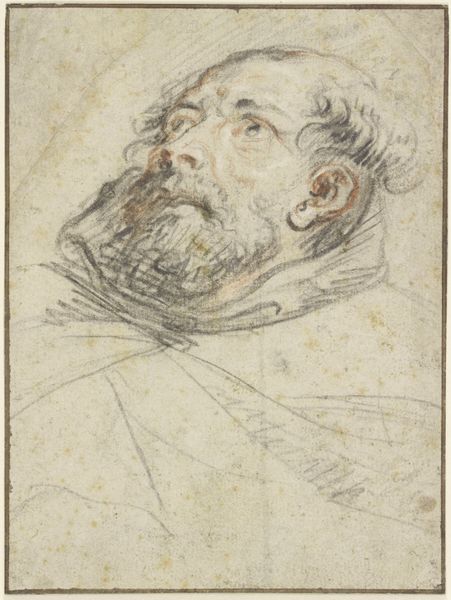
drawing, paper, pencil
#
portrait
#
drawing
#
self-portrait
#
paper
#
romanticism
#
pencil
#
portrait drawing
#
realism
Copyright: Public Domain
Curator: I'm drawn to the direct gaze in this self-portrait by Hans von Marées, currently held at the Städel Museum. It's rendered simply, with pencil on paper. Editor: It feels introspective, almost guarded. The soft pencil lines give it an unfinished quality, like a thought still in progress. Curator: Von Marées was certainly invested in a certain "mode of production", let's say. The very simplicity, the ready availability of pencil and paper—that's a conscious choice. He seems focused on reducing art to its basic material form and process. It's about stripping away the unnecessary to arrive at some core expression. Editor: And it allows for an intimacy. I wonder, too, about what he was grappling with in his identity and whether the medium, pencil, allowed him an avenue of rapid re-evaluation and amendment of the representation of that identity. He could use the texture of paper, too, to add subtle layers. Was the making here as vital as any finished ‘result’? Curator: Absolutely, I see this self-portrait as evidence of a very tactile creation: the pressure of the graphite, the tooth of the paper – all these contribute. Considering the social context: during this time, debates raged about the status of art and its relation to craftsmanship. His commitment to modest, readily available materials, makes me ask to what extent was this some kind of statement. Editor: Exactly. Art shouldn't be aloof but reflective of a culture's ideas. We can even read something political into that material accessibility. Art production shouldn’t be the preserve of a wealthy elite. Also, note how the gaze meets ours: it's a challenging and open exchange that invites viewers from various cultural and gender backgrounds into a discourse that extends beyond that time period. He's making himself vulnerable, perhaps, offering a view onto himself as a creative producer but also as an introspective man working in difficult cultural circumstances. Curator: Precisely. Looking at this from a twenty-first-century lens, this resonates very deeply still. The immediate qualities of materials can speak profoundly of deeper social questions. Editor: And ultimately, art history gains from dialogue, especially around intersectionality, inviting further analysis from more diverse perspectives and with evolving critical tools.
Comments
No comments
Be the first to comment and join the conversation on the ultimate creative platform.
